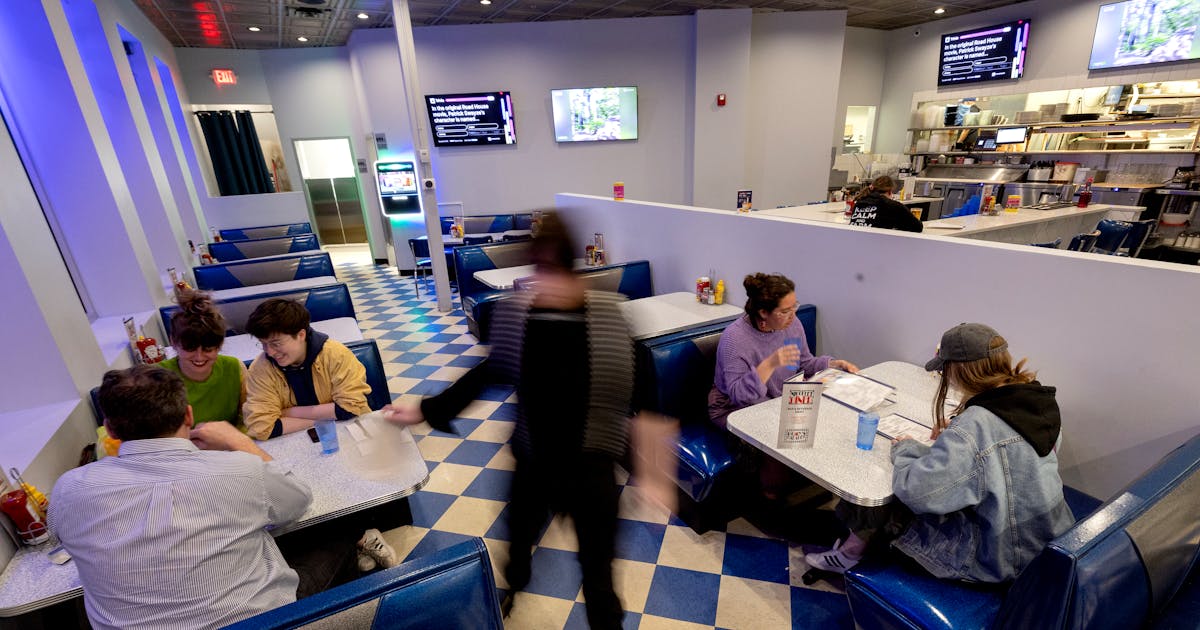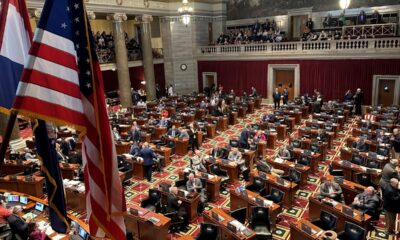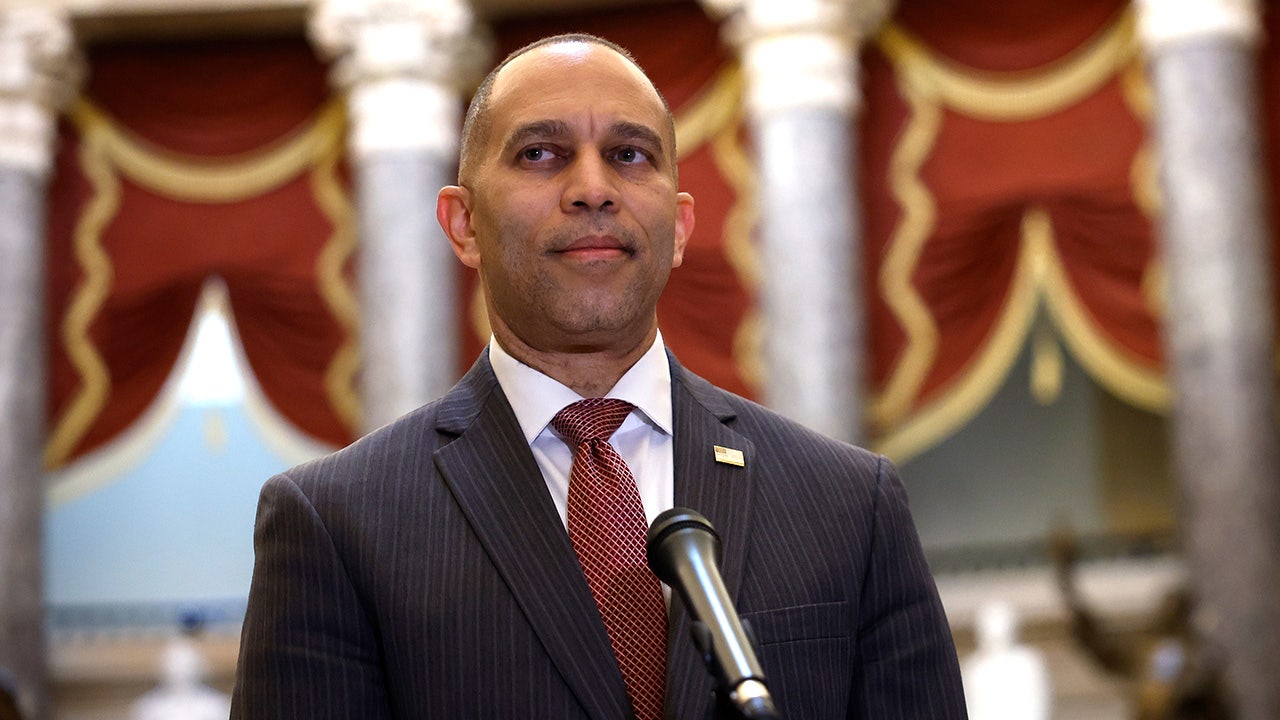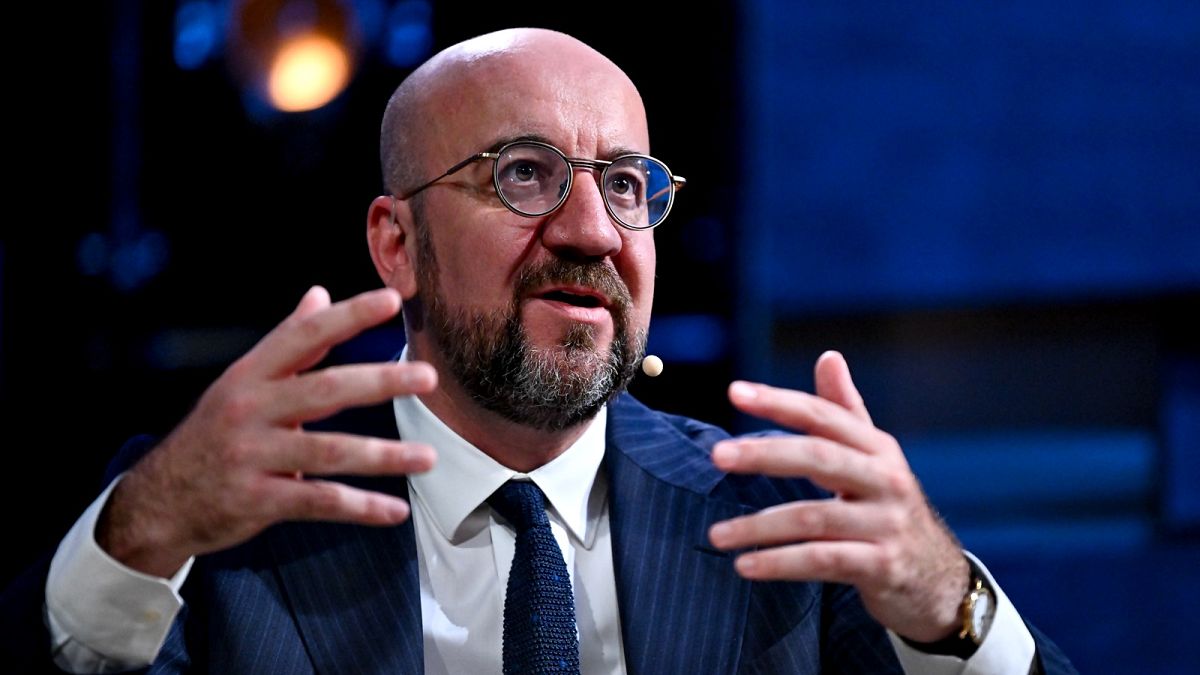Minneapolis, MN
'There just aren't many places left': Why late-night options have dwindled in Minneapolis

The small crowd eating wings and omelets at 3 a.m. inside the Nicollet Diner used to have a lot more choices if they wanted a casual overnight bite in Minneapolis. Now, this Loring Park spot is one of the only options in the city for a post-midnight meal.
“There just aren’t many places left to get something to eat this late,” said 25-year-old Myles Lamar on a Thursday after dark earlier this spring, seated with friends.
A growing number of Minneapolis businesses have pulled back on their late-night hours in the past couple of years, a trend that applies to grocery stores, convenience stores and restaurants that were once known for staying open all night, or at least close to it.
In interviews, managers, workers and a retail association president listed a few reasons for this drop in late-night offerings, including a decline in business, concerns over public safety and changes in consumer expectations in a post-pandemic world.
Sam Turner, the owner of the Nicollet Diner, said he also thinks it’s a troubling trend, and that it indicates Minneapolis isn’t offering the number of late-night amenities that should be expected in a major metropolitan city.
“If your flight lands in Minneapolis and you’re starving after checking into your hotel downtown at 3 a.m., you have zero options,” Turner said. “We’re an option, but that’s about the only one, and that’s just very rare for a city of our size.”
The change is also a blow to some who work nighttime shifts and hope to find something to eat other than fast food.
Sierra Jones, who had just finished her shift at a warehouse, was sitting with her husband at a booth at the diner around 2 a.m. They used to have a few go-to restaurants for a late-night meal, but their choices have narrowed to just the Nicollet.
“We could’ve gone to McDonald’s,” Sierra said, wincing at the thought, “but this is a good place to talk and we know the food is good.”
In Uptown, both the Walgreens on Hennepin Avenue and the Cub Foods on Lagoon Avenue switched in recent months from staying open overnight to closing at midnight. The Holiday gas station store, just north of Walgreens on Hennepin Avenue, recently backed up its closing time from 11 p.m. to 10 p.m.
At the Walgreens, overnight hours were removed in order to “accommodate customer and patient needs while optimizing staffing levels in the area,” a corporate spokesperson said in an email.
Walgreens employee Kendall Olivares said he isn’t sure what led to the reduction in hours, but he noted that staffing has been a challenge. There have also been instances where employees have felt unsafe approaching someone who is shoplifting, which Olivares said happens frequently. Since the reduction of hours in February, “a lot” of customers have told employees they miss the convenience of having a 24/7 Walgreens in the area.
The Uptown Diner, another late-night staple, curtailed its dine-in hours following the pandemic, and for the past several years only offered to-go food after 10 p.m. The diner resumed full 24/7 dine-in service this past summer when Taylor Swift performed in Minneapolis and created additional foot traffic, but that lasted only a few months, general manager Pablo Forero said. Earlier this month, the diner removed its overnight takeout option for Sunday through Thursday, and now goes dark after 11 p.m. on those days.
Forero said it didn’t make sense financially to continue offering late-night dine-in services due to a significant decrease in business.
“Ten years ago, I was seeing another ten- to fifteen-thousand dollars in a week,” Forero said.
With changes to the Uptown Cub Foods’ hours, all six locations in Minneapolis now close at midnight or 10 p.m. Some suburban Cub Foods stores, including in St. Louis Park and Bloomington, still stay open all night. Cub Foods’ owner, UNFI, said in a statement that the company reduced some stores’ hours as an “experiment to understand what would best serve customers.” The company did not answer additional questions.
The number of all-hours restaurants has also decreased nationwide by about 18% since just before the pandemic, according to data from Yelp. Los Angeles saw a much bigger drop, at 35%, while New York and Chicago saw more modest decreases. A quick Google search shows those cities still have significantly more round-the-clock restaurants than the Twin Cities.
Bruce Nustad, president of the Minnesota Retailers Association, said he thinks one factor is that consumers have become more accepting of a store changing hours since the COVID-19 pandemic forced most places to do so.
“Retailers just don’t always see as much pushback on hour changes that we used to, because consumers are more understanding and more flexible in their expectations,” Nustad said.
Some stores have also struggled to maintain enough staff, Nustad said, leading them to reduce hours to operate with a smaller workforce.
Concern about late-night crime is another factor.
“I’ve seen retailers say, ‘You know what? Instead of closing at 10, we’re going to close at 8 because we tend to see more problems in that later evening,’” Nustad said.
At the Uptown Diner, Forero said he thinks customers are becoming more concerned about crime in the area and are going to other parts of the metro to eat instead.
“It’s not like people ever steal from here or anything, but it does affect where people want to go out and eat,” Forero said.
Overall, violent crime decreased in Minneapolis in 2023. But in Uptown Diner’s neighborhood – Lowry Hill East – several crime categories spiked.
The neighborhood had 20 shooting victims last year, more than in any of the past five years. It has also seen a significant rise in gunfire reports, from 29 in 2019 to 109 in 2023. The number of aggravated assaults reached a five-year high, with 83 assaults in 2023.
Forero said it became necessary to pay for a security guard during the overnight hours, which made staying open late more costly. About a month ago, the diner did widen its hours, and now allows sit-down dining until midnight on Friday and Saturday and until 11 p.m. the rest of the week.
Turner offered a different opinion. He said it’s a false perception that Minneapolis has become especially dangerous, adding that he thinks a majority of city residents don’t have the same sentiment.
Instead, Turner said he thinks it’s important to have more foot traffic in the city and keep food establishments open late at night to combat that perception.
“If there were more activated spaces in downtown, I think that there would be a higher sense of safety when people come to visit,” he said.
Star Tribune staff writer Jeff Hargarten contributed to this story.

Minneapolis, MN
Minneapolis: May 31, 2024
Minneapolis, MN
Minneapolis Police Department faces stark officer shortage as it seeks to rebuild public trust

Minneapolis — On a recent Wednesday afternoon, Minneapolis Police Chief Brian O’Hara is racing to a priority call.
“I try to come out to show the officers I am here to back you up,” O’Hara tells CBS News.
O’Hara says his department is short by more than 200 officers, and has lost 40% of its police force in the last four years.
“It is incredible,” O’Hara said. “It’s not just that we lost 40% of the force, they’ve been facing the highest levels of crime and violence, in some categories, that the city has ever seen.”
Minneapolis is facing a surge in assaults, and nearly three dozen shooting calls a month. Officers have been subject to some mandatory overtime.
Large-scale police staffing shortages aren’t limited to Minneapolis. They are taking place in cities big and small, from coast to coast.
The Philadelphia Police Department is short about 1,170 officers, the agency told CBS News. The Chicago Police Department is short more than 1,140 officers, the department disclosed, while the Los Angeles Police Department is short more than 470 officers.
But in Minneapolis, the hurdle is more than just manpower, it is trust too. Nearly four years after the murder of George Floyd by a Minneapolis police officer, the department has cleaned the house of its top brass.
O’Hara was hired as chief in late 2022 from Newark, New Jersey — where he served as deputy mayor — as the department seeks to change its culture.
But not everyone thinks there’s been enough change yet.
“I don’t think that the department has been transformed by choice,” said Nekima Levy Armstrong, a Minneapolis community activist for nearly two decades. “I think that it’s been transformed by necessity.”
Armstrong says O’Hara has not yet rid the department of all officers who are too physical or too focused on people of color.
“It’s unfortunate that they’re down 40%, but this is of their own making, right? The handwriting was on the wall in regard to the conduct of many Minneapolis police officers,” Armstrong said.
Like many other departments, Minneapolis offers signing bonuses for new recruits. But O’Hara says the problem is deeper than money. In an February editorial in the Star Tribune, he posed the question: “Do we expect too much from police officers?”
“Well, people expect perfection every time, absolutely,” O’Hara told CBS News.
As he struggles to rebuild the force, O’Hara emphasizes to his officers that summer usually means a spike in crime.
“It’s getting warmer, and staffing is definitely a concern,” he told his staff at a recent roll call.
Minneapolis, MN
Record Travel Expected For Memorial Day 2024: Here's When To Leave MN

MINNESOTA — If you’re planning to get out of Minnesota for the three-day Memorial Day weekend, knowing when to avoid the busiest times on major routes can make the difference between a stress-free holiday or one the kids will never let you forget.
Some 43.8 million Americans are expected to travel at least 50 miles from home to celebrate Memorial Day in 2024. That’s a 4 percent increase from last year, AAA said in its annual Memorial Day travel forecast. Travel this year could approach the record set in 2005, when 44 million people took Memorial Day trips.
Memorial Day, the unofficial start to summer, has always been a big road trip holiday. About 38.4 million people plan to take off in their cars, the highest number for the holiday since AAA began tracking Memorial Day travel in 2000.
Airports are expected to be busier than last year, too, with about 3.51 million people flying to their Memorial Day destinations, 4.8 percent more than last year and 9 percent more than pre-pandemic 2019. Crowds could rival the post 9/11 recovery in 2005, when 3.64 million people flew, AAA said.
“We haven’t seen Memorial Day weekend travel numbers like these in almost 20 years.” Paula Twidale, a senior vice president at AAA Travel, said in a news release. “We’re projecting an additional 1 million travelers this holiday weekend compared to 2019, which not only means we’re exceeding pre-pandemic levels but also signals a very busy summer travel season ahead.”
The number of people taking road trips this year is projected to be 4 percent higher than last year, and 1.9 percent higher than before the pandemic in 2019.
Gas prices should be approximately the same as last year, when the national average for regular gasoline was about $3.57 per gallon. On Wednesday in Minnesota, regular gasoline is selling for $3.24 a gallon.
Pump prices always creep higher as the summer driving season gets underway, and wars in Ukraine and the Middle East could roil the oil market, AAA cautioned.
Travel Times To Avoid
AAA’s transportation data partner, INRIX, says drivers who are leaving on Thursday and Friday should get on the road early to avoid peak commute time. Travelers returning from their getaways on Sunday and Monday should avoid the peak travel afternoon hours.
“Travel times are expected to be 90 percent longer than normal,” Bob Pishue, a transportation analyst at INRIX, said in a news release. He advised road trippers to remain up to date on traffic apps, 511 services and local news stations to avoid sitting in traffic any longer than necessary.
These are the best and worst times to travel by car (all times local):
Thursday, May 23
- Worst time: noon to 6 p.m.
- Best time: before 11 a.m., after 7 p.m.
Friday, May 24
- Worst time: noon to 7 p.m.
- Best time: before 11 a.m., after 8 p.m.
Saturday, May 25
- Worst time: 2-5 p.m.
- Best time: before 1 p.m., after 6 p.m.
Sunday, May 26
- Worst time: 3-7 p.m.
- Best time: before 1 p.m.
Monday, May 27
- Worst time: 3-7 p.m.
- Best time: After 7 p.m.
Peak Congestion Times
Here are the peak congestion times for busy metropolitan routes, the estimated travel time and the increase in traffic due to the holiday:
- Atlanta: Atlanta to Savannah via I–16E; 4:45 p.m. Saturday; 5 hours, 14 minutes, 54 percent longer than normal.
- Boston: Manchester to Boston via I-93S; 8:45 a.m Sunday; 1 hour, 48 minutes, 50 percent longer than normal.
- Chicago: Milwaukee to Chicago via I-94E; 4:30 p.m. Sunday; 2 hours, 25 minutes, 27 percent longer than normal.
- Denver: Fort Collins to Denver via I-25S; 4:15 p.m. Sunday; 1 hour, 24 minutes, 56 percent longer than normal.
- Detroit: Detroit to Kalamazoo via I-94E; 8:45 p.m. Sunday; 2 hours, 48 minutes, 40 percent longer than normal.
- Houston: Galveston to Houston via I-45N; 5 p.m. Sunday; 1 hour, 11 minutes, 73 percent longer than normal.
- Los Angeles: LA to Bakersfield via I-5N, 6:15 p.m. Thursday, 2 hours, 45 minutes, 84 percent longer than normal.
- Minneapolis: Eau Claire, Wisconsin, to Minneapolis via I-94W; 8:45 a.m. Monday; 1 hour, 45 minutes, 38 percent longer than normal.
- New York: New York City to Albany via I-87N, 11:45 a.m. Thursday; 2 hours, 37 minutes, 64 percent longer than normal.
- Philadelphia: Philadelphia to Baltimore/Washington, D.C., via I-95; 7:30 a.m. Friday, 43 percent longer than normal.
- Portland: Hood River to Portland via I-84W; 6:30 p.m. Monday; 1 hour, 20 minutes, 42 percent longer than normal.
- San Diego: San Diego to Palm Springs via I-5N; 6:30 p.m. Monday; 1 hour, 20 minutes, 34 percent longer than normal.
- San Francisco: San Francisco to Napa via I-80E; 11 a.m. Friday; 3 hours, 4 minutes, 56 percent longer than normal.
- Seattle: Ellensburg to Seattle via I-90E; 4:30 p.m. Sunday; 2 hours, 34 minutes, 58 percent longer than normal.
- Tampa: Gainesville to Tampa via I-75S; 9 a.m. Sunday; 3 hours, 47 minutes 88 percent longer than normal.
- Washington, D.C.: Washington to Baltimore via Baltimore/Washington Pkwy N; 2:15 p.m. Friday; 1 hour, 25 minutes, 72 percent longer than normal.
Other Means Of Travel Rebound
While most people are either driving or flying to their Memorial Day destinations, about 1.9 million people will take trains, buses and cruises, an increase of 5.6 percent from last year, AAA said.
“This category took the biggest hit during the pandemic with fewer people taking public transportation or not cruising at all,” Twidale said. “Now — five years later — we’re back to 2019 numbers. Travel demand has been soaring, and long holiday weekends create the perfect windows for getaways.”
-

 News1 week ago
News1 week agoCompass Direct LLC’s 2024 Registration in North Carolina
-

 World1 week ago
World1 week agoTech compliance reports, Newsletter
-

 News1 week ago
News1 week agoMan, 75, confesses to killing wife in hospital because he couldn’t afford her care, court documents say
-

 News1 week ago
News1 week agoColumbia University cancels its main commencement ceremony after weeks of turmoil
-

 World1 week ago
World1 week agoPentagon chief confirms US pause on weapons shipment to Israel
-

 World1 week ago
World1 week agoConvicted MEP's expense claims must be published: EU court
-

 Politics1 week ago
Politics1 week agoPresidential polls show deadlocked race as party conventions quickly approach
-

 Politics1 week ago
Politics1 week agoRFK Jr said a worm ate part of his brain and died in his head




















